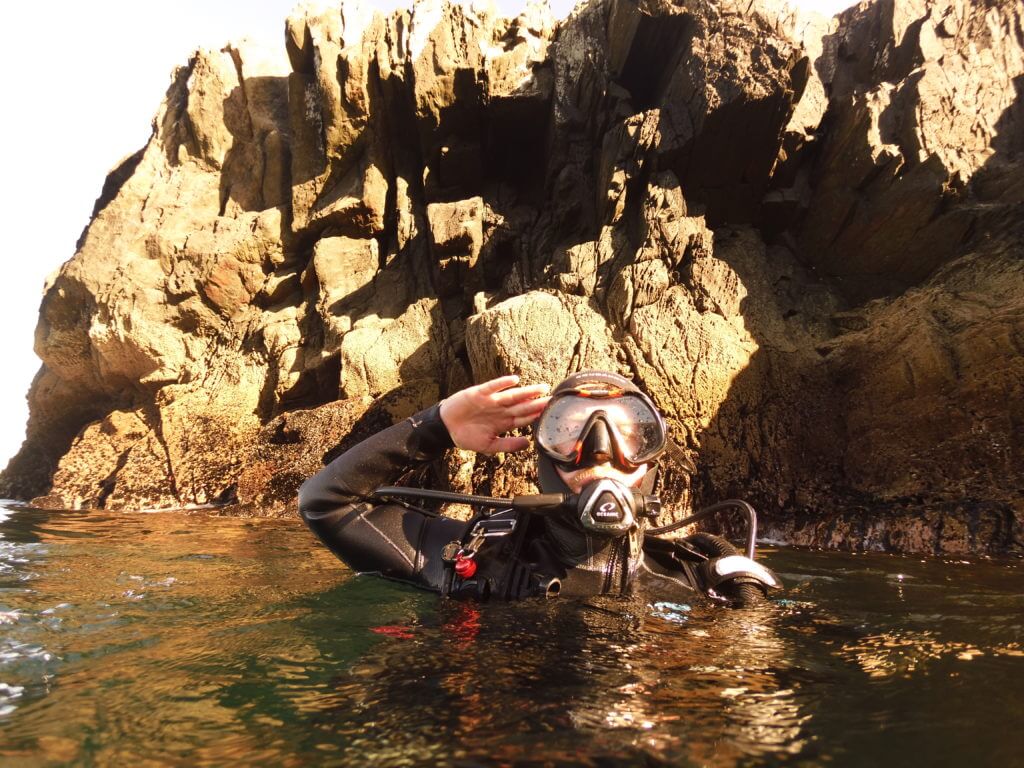
KILLARY FJORD, IRELAND by Diving Squad
Nestled among the breathtaking beauty of North Connemara’s landscape; a place of jagged mountains and sweeping wildernesses: Killary Fjord (aka Killary Harbour) is Ireland’s only glacial fjord.
Killary Fjord is also the launchpad for a series of world-class but almost completely unheard of scuba diving sites!
Although quite a few travellers head to North Connemara to trek through it’s beautiful scenery; few realise that the marine ecosystems off its coasts are equally spectacular.
Amidst eerie kelp forests and reefs of Dead Man’s Fingers (a yellow soft coral), scuba divers can see many fish, crabs, lobsters, nudibranch and other life.
Larger marine creatures also make their homes in these waters. Conger eels are found hiding among several anemone-encrusted shipwrecks, whilst lesser-spotted catsharks are often seen around the reefs.
At some dive sites, scuba diver’s can witness over half a dozen species of different coloured sponges growing close together; spattering the rocks with a rainbow splash of colour.
Over September 2022, a Diving Squad Mission took place around Killary Fjord to document the scuba diving; read on to find out what happened and to learn how you can dive there yourself!
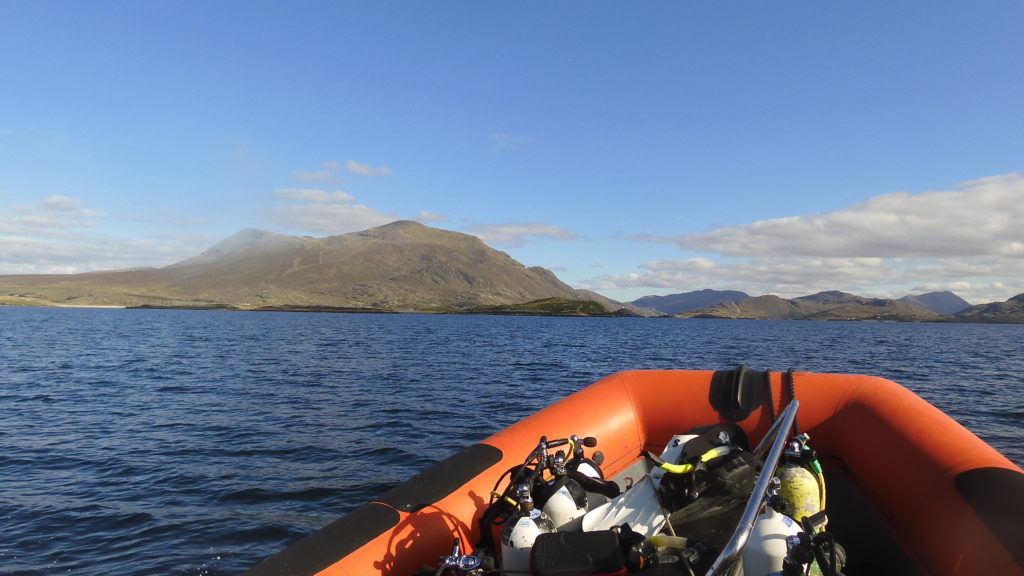
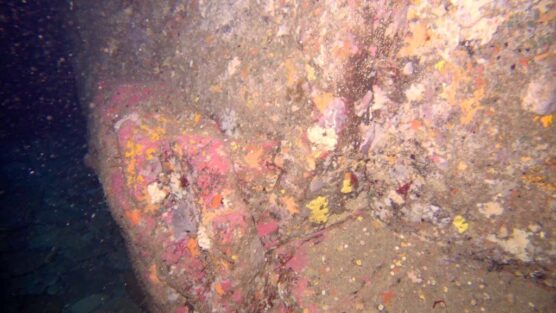
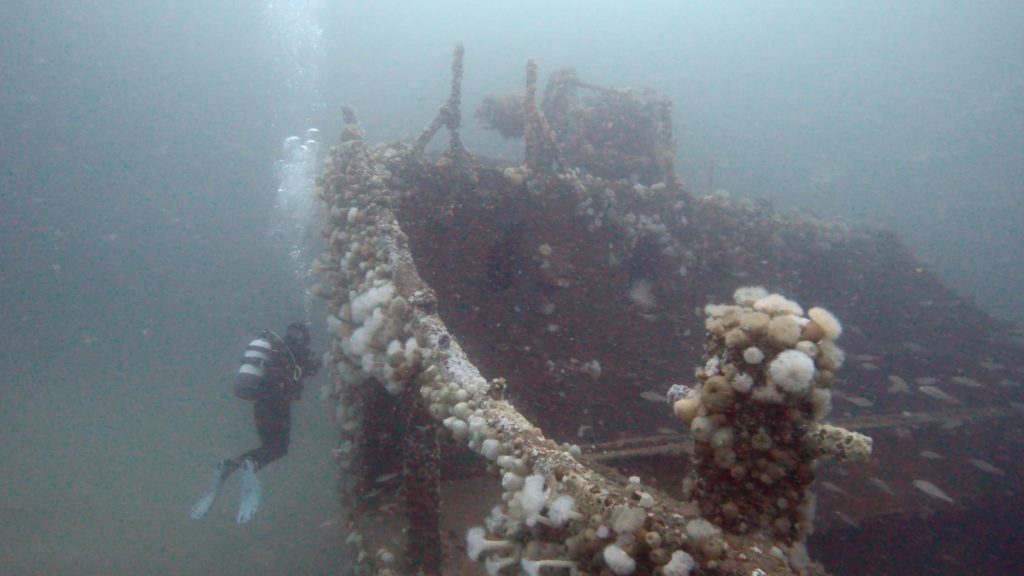
Local Dive Centre: Scuba Dive West
There’s only one dive centre around Killary Fjord: Scuba Dive West.
Scuba Dive West is run by brothers Breffni and Cillian Gray who have 30 years of diving experience and whose parents (Shane and Olli Gray) established Ireland’s first dive school in 1974.
In 1992, the family run business moved to Connemara to establish Scuba Dive West – a PADI 5 Star Dive Centre located at the mouth of Killary Fjord.
It’s a spacious dive centre with hot showers, big changing rooms, a vending machine, maps, a well equipped dive shop and all the rental gear you’ll ever need.
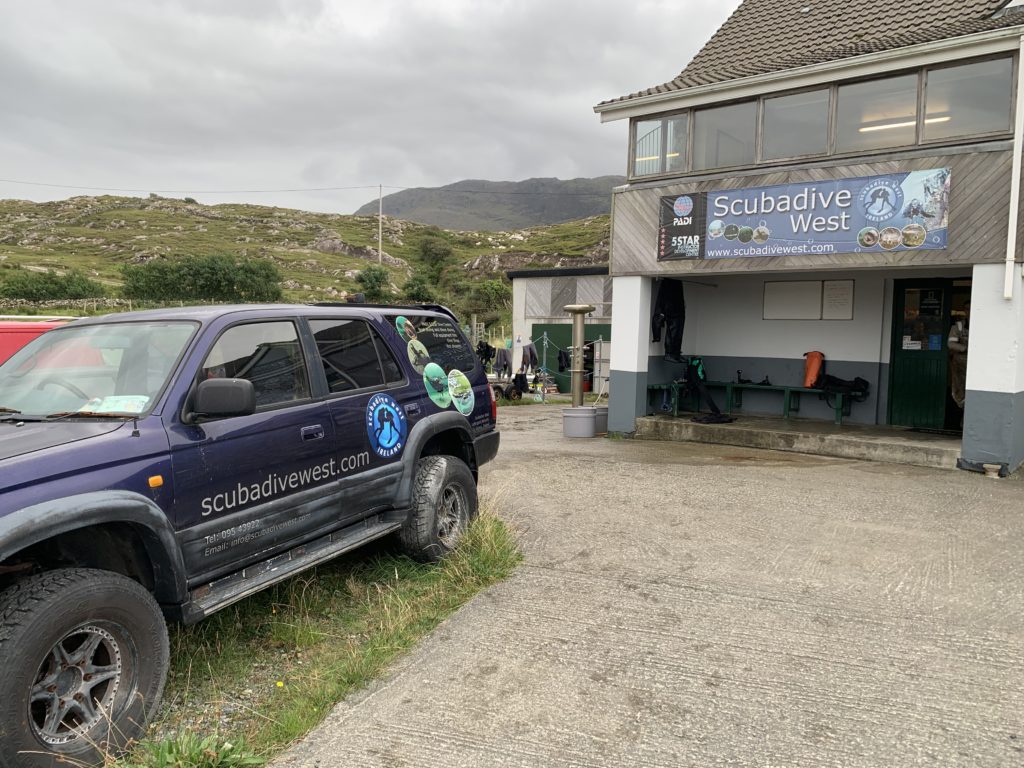
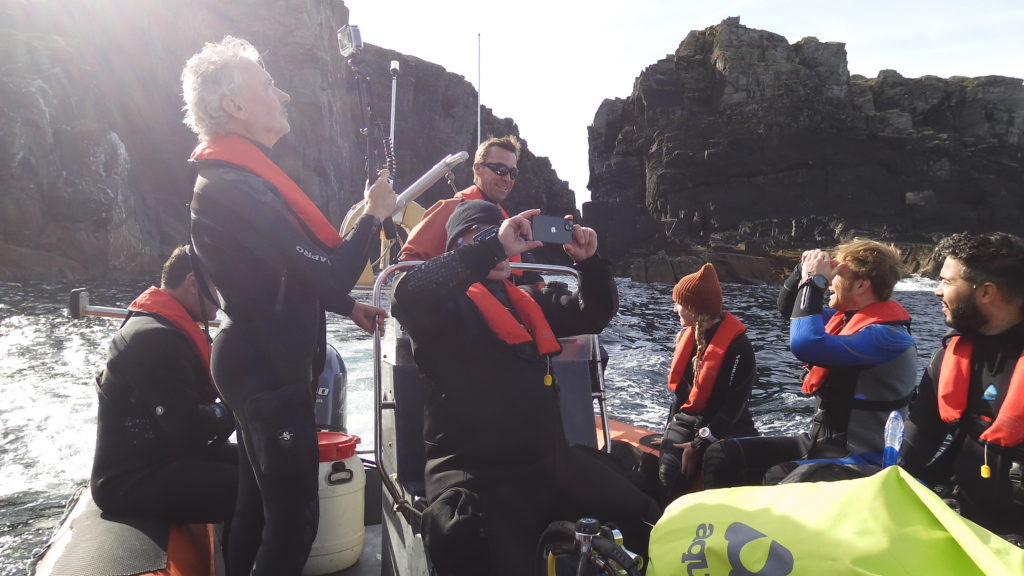
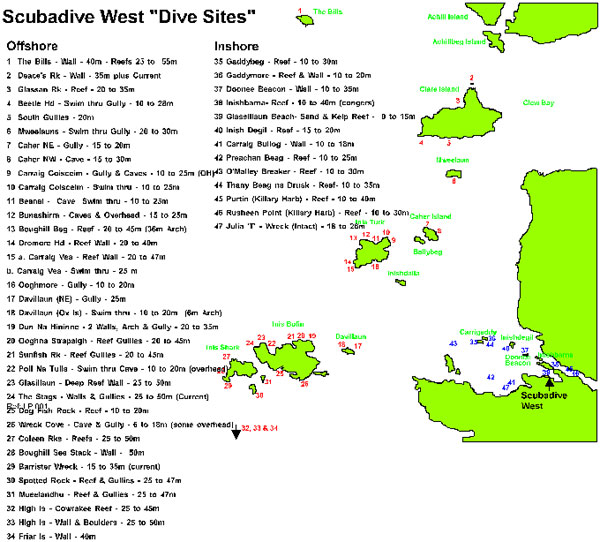
There’s 3 ways of diving with Scuba Dive West which I’ve ranked in order of increasing awesomeness:
- Shore Diving is available most days and explores the water’s right next to Scuba Dive West. There’s a couple of decent shipwrecks and plenty of crabs, starfish and swimming scallops. This is a great place to do a refresher dive or get scuba certified.
- Boat Trips are available at the weekends and explore dive sites that are a little further out; usually 10 – 20 minutes boat ride. A favourite dive site is the Julia T wreck: a 30 meter long supply ship that sits perfectly upright at 88 feet (27 m) deep. It is entirely covered in orange plumose anemones whilst also enshrouded from above with huge schools of bib (aka poor cod). Hiding amidst the wreck are conger eels and other creatures.
- Adventure Day Trips operate one Saturday a month during summer. The boat heads as far out as 20km to very rarely visited, world-class dive sites around the islands of Inishturk, Inishbofin, Caher and Crump – with a stop on one of the islands for lunch. There are some superb and very off the beaten track dive sites around these islands where one can discover huge wall dives and exciting arches and swim throughs coated with many different species of colourful sponge.
Check out the Scuba Dive West website to see upcoming dive trip availability and to make an online booking.
Where to Stay
By far the cheapest and closest place to stay near Scuba Dive West is Connemara Caravan & Camping Park which is just a 5 minute car ride from the dive centre.
The campsite is set in a truly beautiful location with mountains on one side and the ocean on the other and because there are so few buildings anywhere around you can enjoy some incredible night skies on clear nights.
There’s usually plenty of space for tents and caravans!
Of course feel free to look around for local airbnb’s or hotels; but take heed that due to how incredibly sparsely populated this area is they will be both expensive and in very high demand – plus further from the dive centre!
The campsite has showers and a small cafe but no cooking facilities.
You wont find any big or even medium sized stores anywhere nearby so bring your own camping food and supplies.
In terms of eating out; the closest place is Tullycross: a small village about ten minutes drive away from the campsite.
There’s a few pubs / restaurants there; my favourite is Paddy Coynes Pub; a 200 year old pub with a lively history and excellent food and drink!
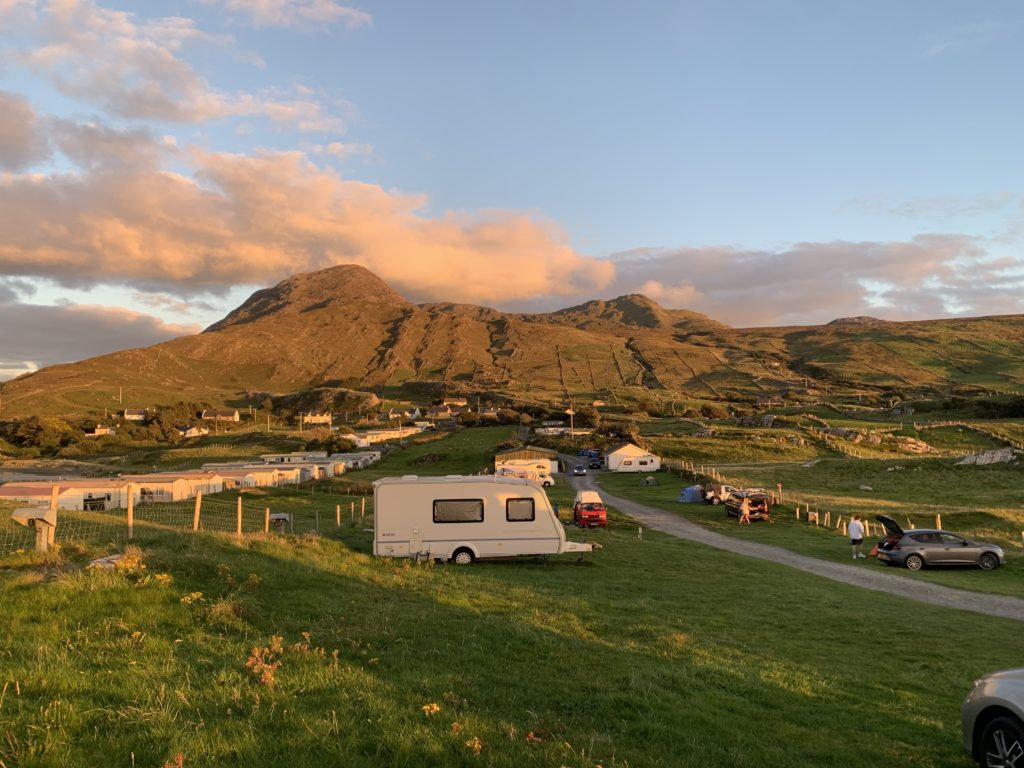
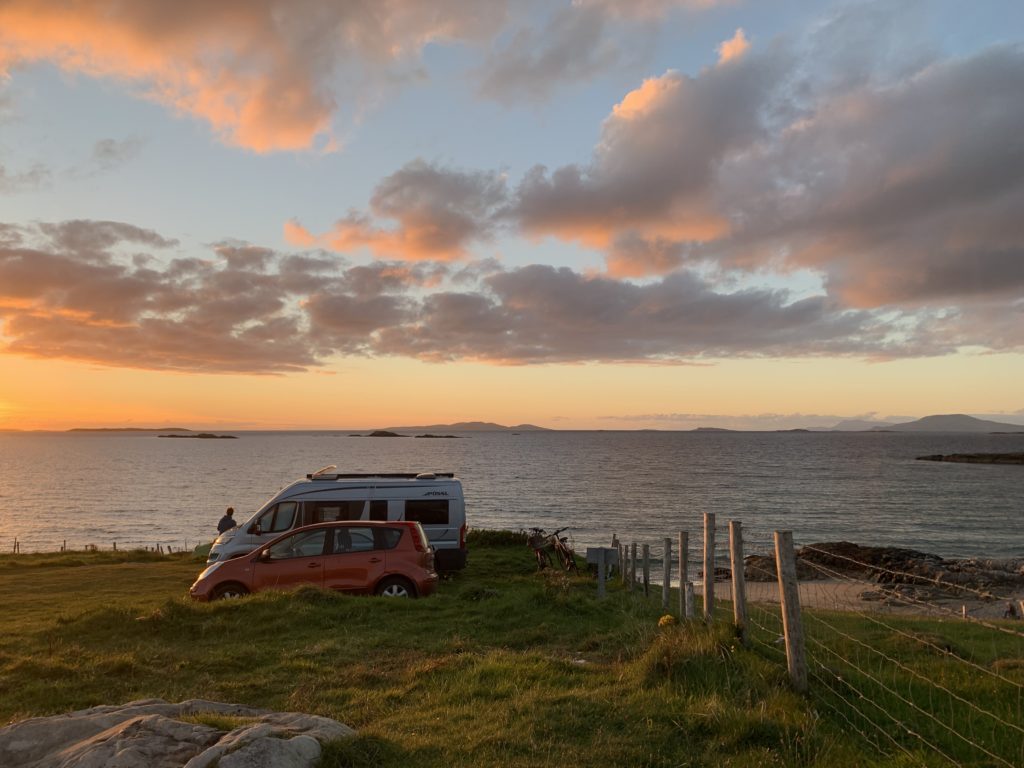
Getting There
The closest international airport is Knock aka Ireland West Airport (NOC).
From Ireland West Airport, it is a 2 hour car drive (98km) to Scuba Dive West / Connemara Caravan & Camping Site.
From Dublin airport the car journey is about 4 hours (292 km).
Alternatively, you can take a bus with Galway Coach Station which is connected with Dublin, Limerick, Galway, Letterfrack and many more destinations.
Scuba Dive West and Connemara Camping and Dive Site (5 minutes drive apart) are located in north Connemara which is part of county Galway. Check out the exact location here.
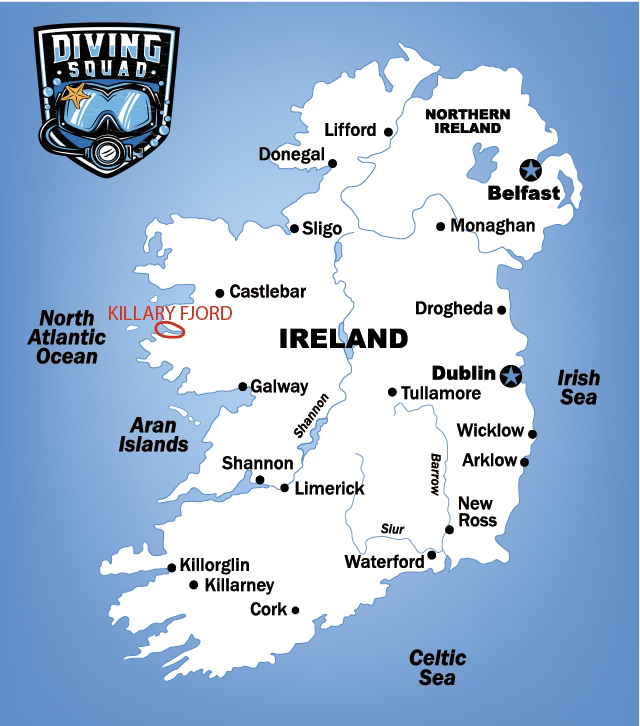
Diving Season & Conditions
By far the best time to scuba dive around Killary Fjord is during the warmer months from May – September when boat dives operate every weekend and adventure day trips occur once a month.
Quite often, Scuba Dive West do not operate between November and January. In the months of October, February, March and April; they are open; but diving is usually restricted to shore dives. Check their calendar here.
During those warmer months from May – September, water temperatures usually sit at around 57 – 59 degrees Farenheit (14 – 15 degrees celcius). Wetsuit wearers will probably want to go for a 7mm – or a 5mm wetsuit with a shorty on top as well as a hood and gloves.
Water visibility varies – it’s not as good on the shore dives being around 15ft / 5m but on boat dives and adventure day trips it can be 33ft / 10m or more. Currents are absent to very mild.
My Experience / The Mission
In September 2022, I found myself pitching a tent in Connemara Camping & Caravan Site; having driven up there from county Kerry with my mum’s red Suzuki – or as I called it “The Mothership”.
Probably because it was mine, the tent was already looking rather battered; having adopted a somewhat lopsided appearance due to the poles being bent, several missing tent-pegs and the guy ropes being tangled.
It appeared a lot less neat than it had when I’d used it just 6 weeks ago whilst diving at the Aran Islands – but fortunately it didn’t blow away!
It had been a visually stunning drive coming into North Connemara; with its many mystical looking mountains and sweeping wildernesses of heath, grassland and bogland; occasionally dotted by clumping forests of pine trees; this was a vast yet empty seeming place.
I only saw two other cars on the road for the last 45 minutes of driving and could have pulled over literally anywhere to have been rewarded with the kind of view one could stare out across for half a day.
The next morning I awoke and spent the first few hours driving around some more; where I found a white sand beach that was entirely deserted.
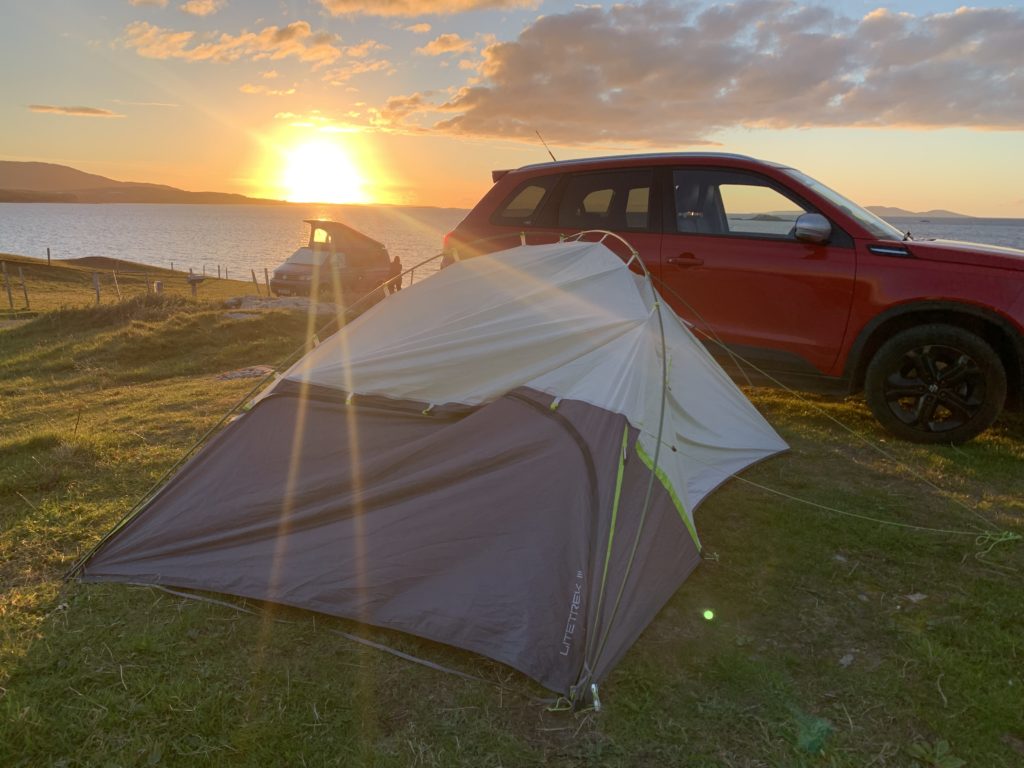
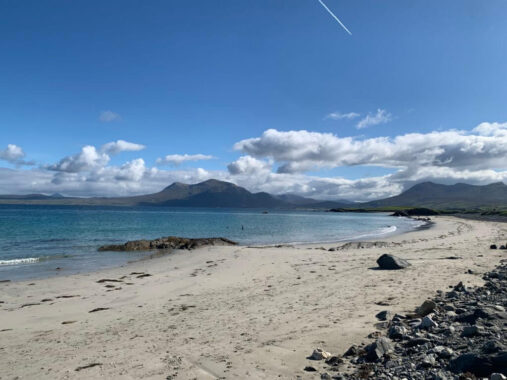
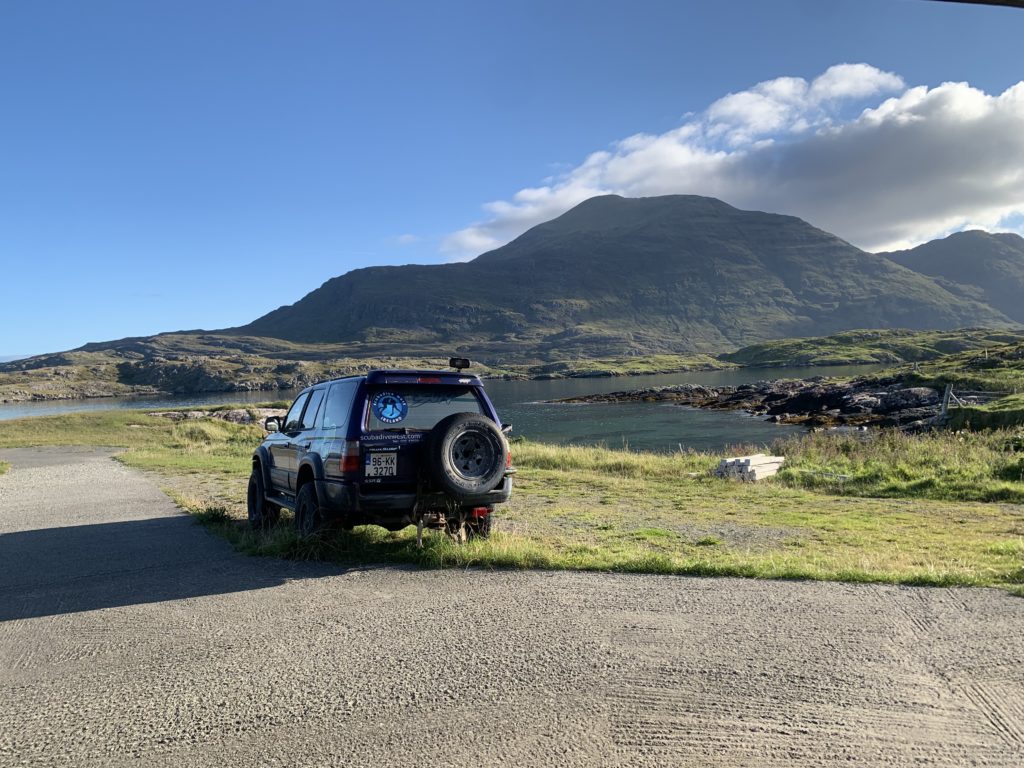
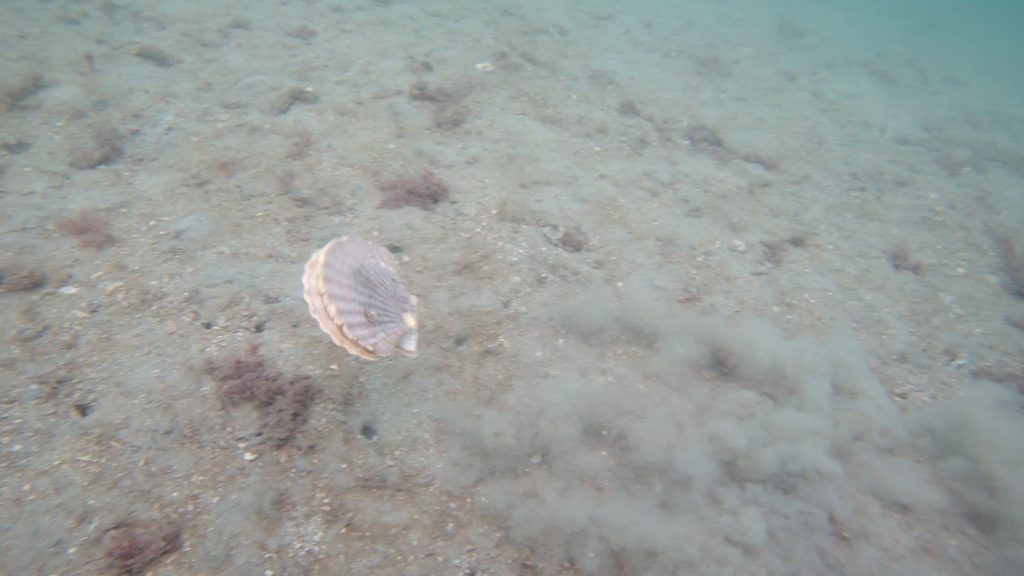
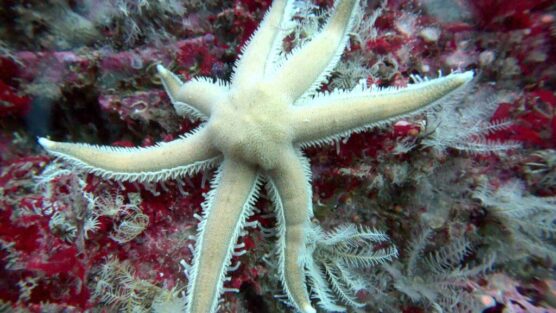
That afternoon, I headed to Scuba Dive West. Located at the mouth of Killary Fjord and surrounded by mountains it had the most visually stunning backdrop of any dive centre I’d ever been to!
My first dive with Scuba Dive West was a shore dive – I carried my gear some hundred meters past the jeep in the photo to the left, down a gentle slope and waded out with my dive buddy: Andy; a seasoned cold water diver who I’d just met.
The very first animal that I saw was a queen scallop swimming past me. You read that right – not many people realise this but scallops can actually swim by snapping their shells open and closed.
They use this rudimentary form of jet propulsion to escape starfish that have crawled up to try and pry their shells apart and eat them (which the starfish does by regurgitating it’s entire stomach onto it’s prey and then sucking it all up).
There was plenty of kelp and a few chunks of bright yellow boring sponge as well as numerous sea anemones, velvet swimming crabs and hermit crabs.
Thanks to Andy’s awesome navigation skills we also found the two small local shipwrecks which were adorned with sea anemones, starfish and sponges.
Paralenz had just given me the macro lens for their Vaquita (my favourite underwater video camera of all time) and one of my primary objectives for Killary Fjord was getting to grips with it – the first thing I filmed with it was the seven armed starfish you can see a still of to the left!
It was a great first day of diving; although the next two would be far more exciting; I’d gotten my first taste of Killary Fjord – and of what it was like being able to film the marine world up super close thanks to my Paralenz Vaquita macro lens. I was hungry for more.
The next day was a very interesting one indeed!
I rendezvoused with two dive compadres of mine: Aish a divemaster from Dive Academy at the Aran Islands and Jack; a marine biologist who I’d also met when diving the Aran Islands.
The three of us has booked well in advanced to secure our spot on Scuba Dive West’s monthly Adventure Day Trip; of the seven guests in total we were the only three not in drysuits!
We set forth on the Scuba Dive West speed boat – our destination: Inishturk island. Lying about 12km out to sea, Inishturk is the most sparsely populated of all Ireland’s inhabited islands with a total of just 58 people living there.
The boat passed through a truly epic ravine of towering rocky cliffs on either side to reach the day’s first dive site: Dromore Head on the western side of Inishturk.
Scuba Dive West are quite unique in the manner they operate. Rather than guide guests on dives themselves, they give a detailed briefing and then it’s up to divers and their buddies to find their way about!
Myself, Aish and Jack formed a trio of dive buddies: “team awesome” (was what I called us in my head) and with Jack in charge of navigating whilst Aish did safety stop marker buoys I got away with doing fuck all besides filming the dive!
I was still experimenting with my newly developed custom camera rig – at one end was secured my Paralenz Vaquita: for shooting underwater film and on the other was fastened my Sealife Micro 3.0: for underwater photographs and filming on land.
I had a macro lens for both cameras but the Vaquita’s was more practical as it connected via a flip mount allowing me to switch from macro to normal mode in half a second whereas the Sealife Micro 3.0’s macro lens I had to take out and screw on.
On an upwards jutting arm of the rig was a Seadragon 3000F beam: a powerful photo/video light to illuminate subjects and also double up as a torch.
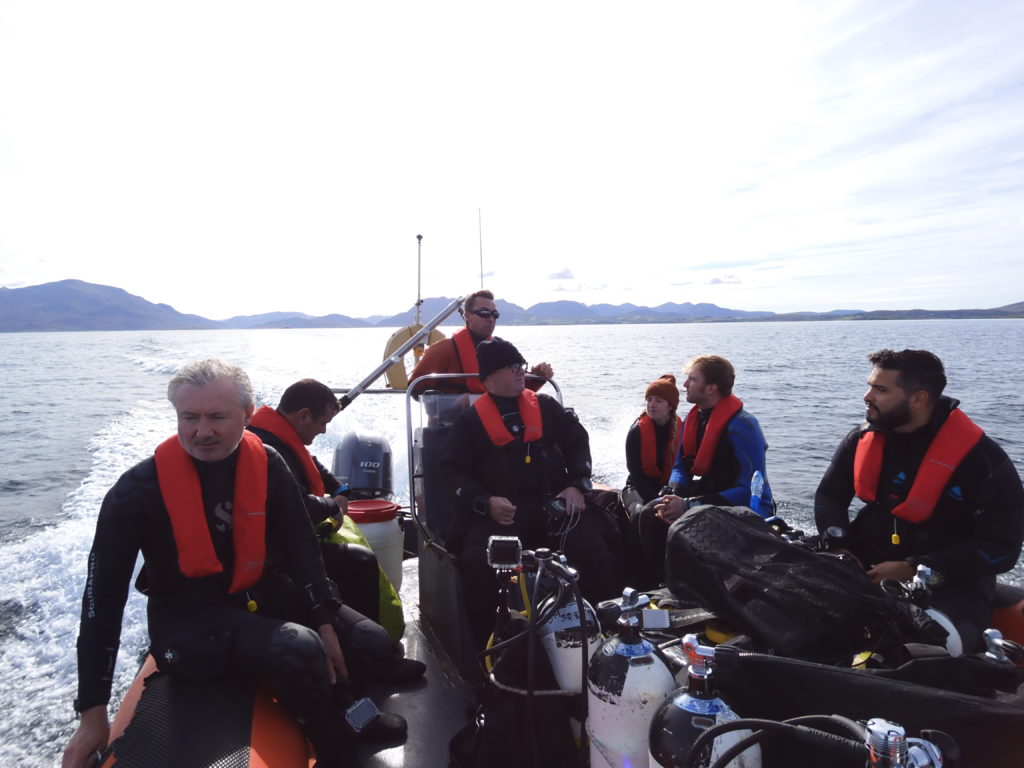
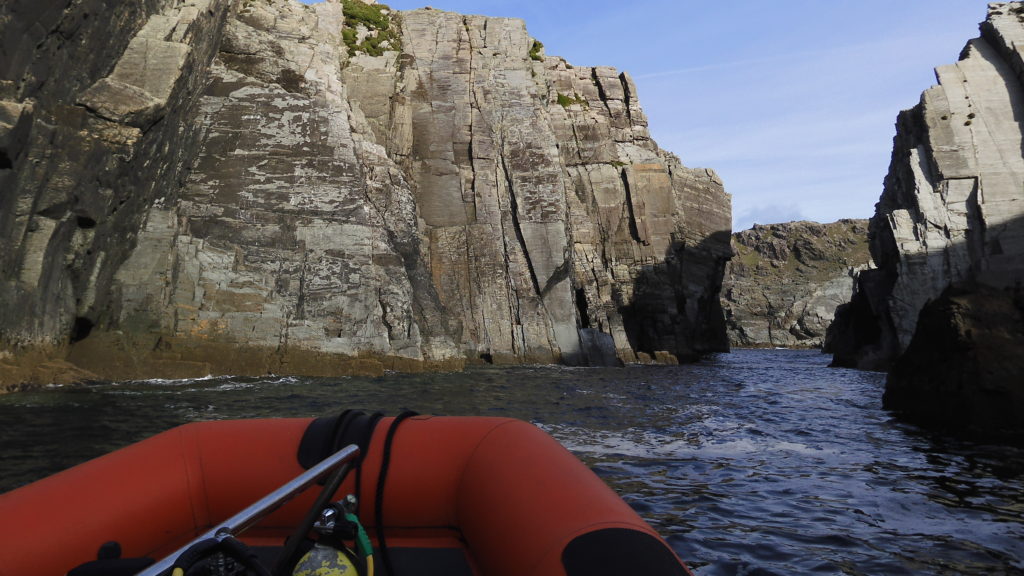
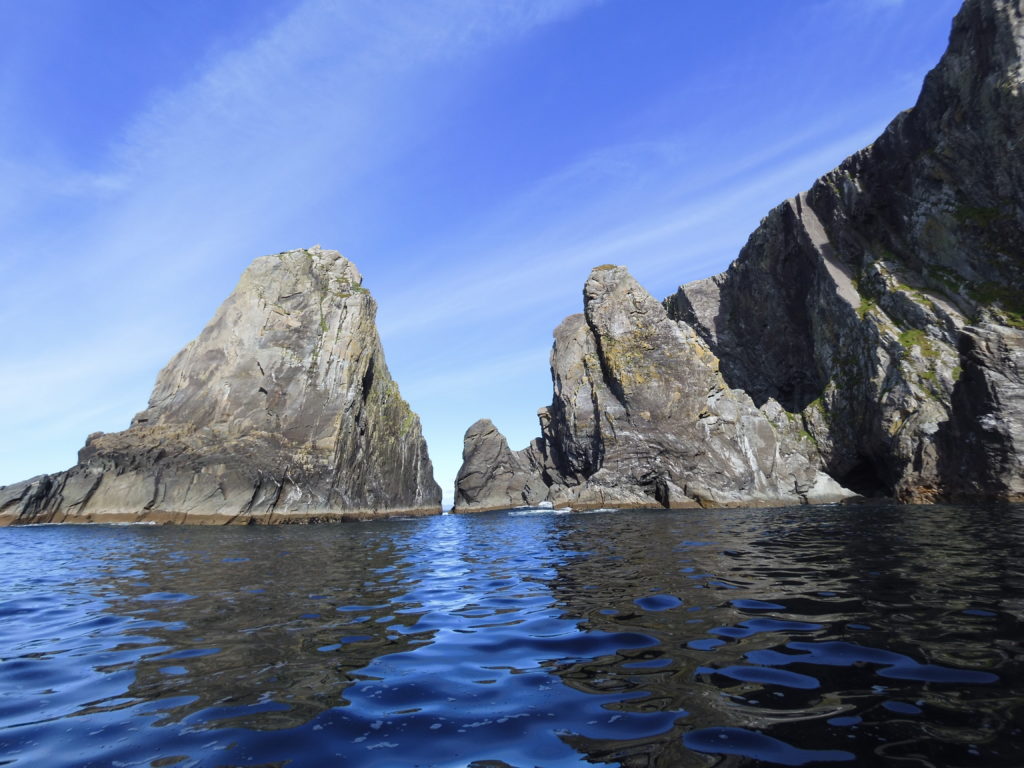
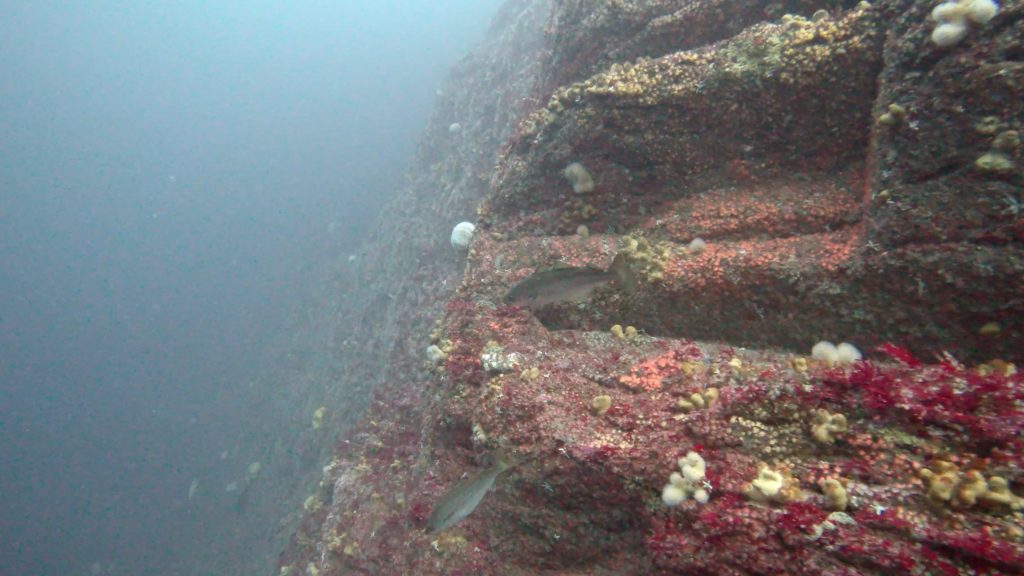
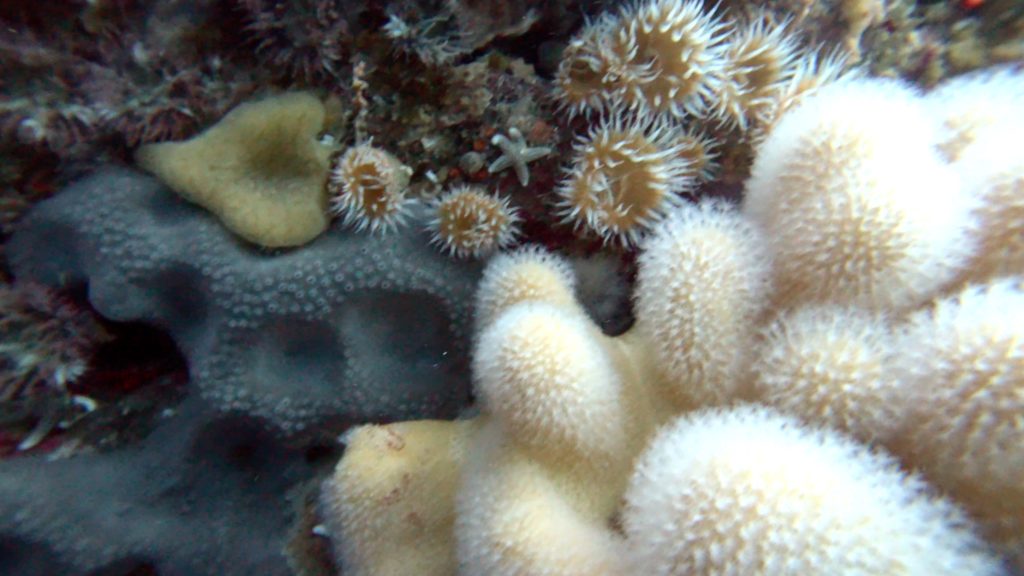
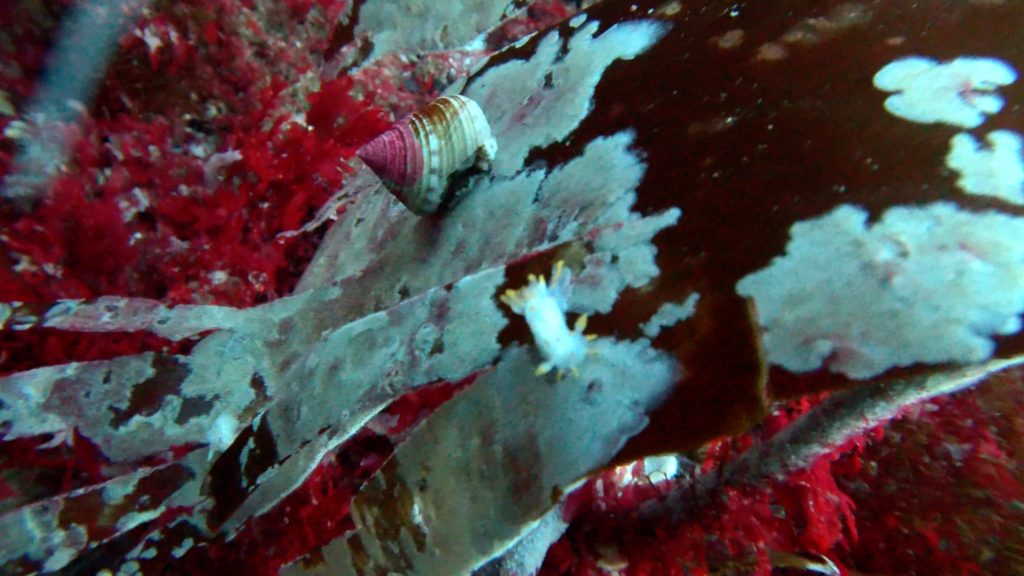
So over the side of the boat we backrolled and down under the dark blue seawater we descended.
Dromore head was very much a wall dive; Team Awesome stayed at around 78 feet (24 meters) but below us the rocks swept down by at least the same distance again or more.
Mostly, the wall was doused in dark red seaweed and the pale orange of countless fried-egg sea anemones; but amidst the reds and oranges were also thick yellow patches of dead man’s fingers; a soft coral.
Huge grey chunks of elephants hide sponge grew in places whilst armies of white sea potatoes (a type of sea urchin) and tiny starfish marched in slow motion across the rugged underwater terrain.
There were dozens of pollock; long silvery fish shaped like torpedoes with bodies up to 30cm long; and looking down it seemed that the deeper one went the more there were.
Here and there the odd crab peaked out of a crevice withdrawing back when we drew close.
Around some parts of the wall were a few clusters of kelp and on some of it’s leaves I was amazed to find scores of tiny nudibranch with white bodies and yellow tips that I think were Polycera quadrilineata after looking at this field guide to Connemara nudibranch.
On some leaves there were half a dozen together, but it was hard to get a good shot of them because the kelp kept waving to and fro!
It was a great dive and afterwards the boat took us round to the tranquil little pier of Inishturk island where we stopped for tea and scones (technically I had a cookie).
After an hour of chill time and general scuba banter we headed back aboard and made for our next destination
The second dive site of the day was called Carraig coisceim and it lay round a different side of Inishturk; the boat bought us within just a few meters of some small rocky cliffs and then we dived back in.
Thanks to the insane diversity of the marine landscape through which we travelled, myself and the rest of Team Awesome agreed it was one of the coolest dives we’d ever done!
We descended through a rocky cavern into an underwater gully and travelled through a dark tunnel, torches in hand.
Although it was a little like being in a cave there was plenty of space around and above us so didn’t feel cramped and amazingly we were only about 36 feet (10 meters) deep!
I was amazed to see over half a dozen different species of sponge lining the walls of the cavern; splashing it with an array of colours.
As well as yellow boring sponge, grey elephants hide sponge and black tar sponge there were also other species that I didn’t recognise which were pink, orange and green.
Never had I seen so many different sponge species growing all together in any part of the world!
A side mission I was on was collecting photographic data for the Sponge Safari programme run by Irish conservation group Seasearch and because several sponge species I saw weren’t even on the Seasearch sponge ID page, it had interesting implications!
Click on the arrows in the reel below to scroll through some of the stills I collected of the sponges using my Sealife Micro 3.0 and Seadragon 3000F beam.
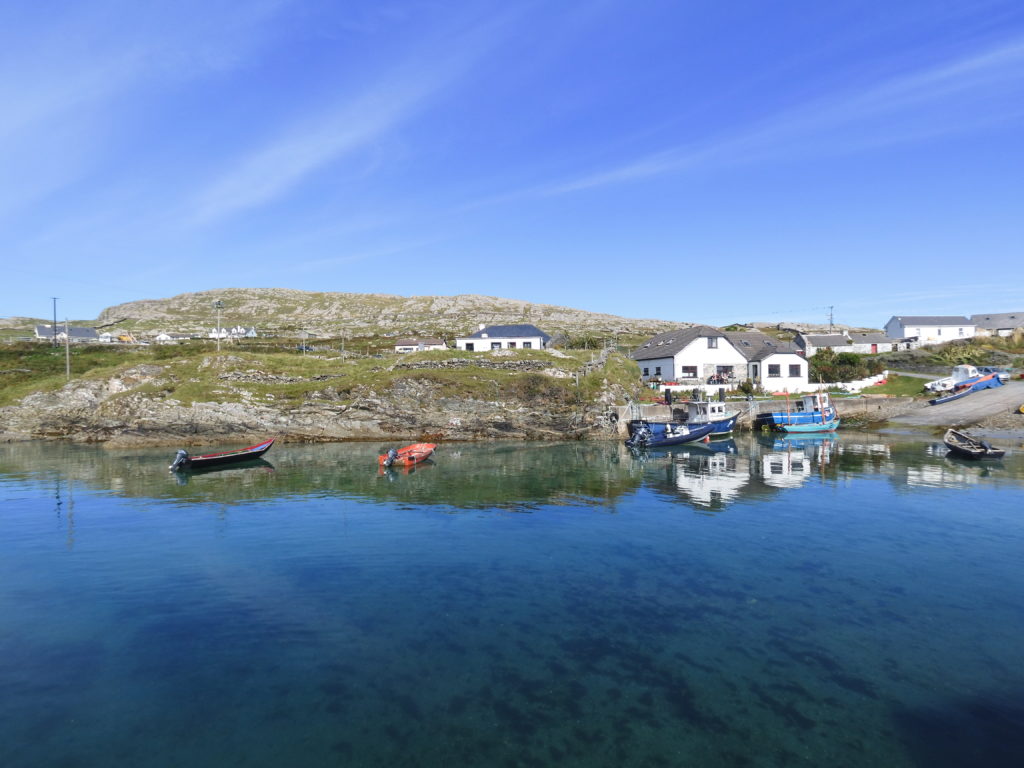
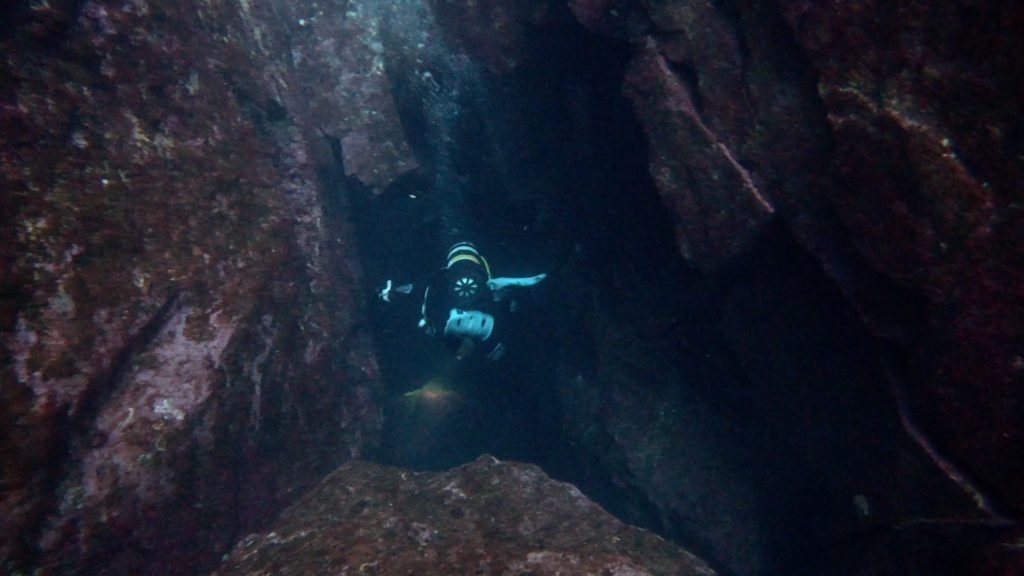
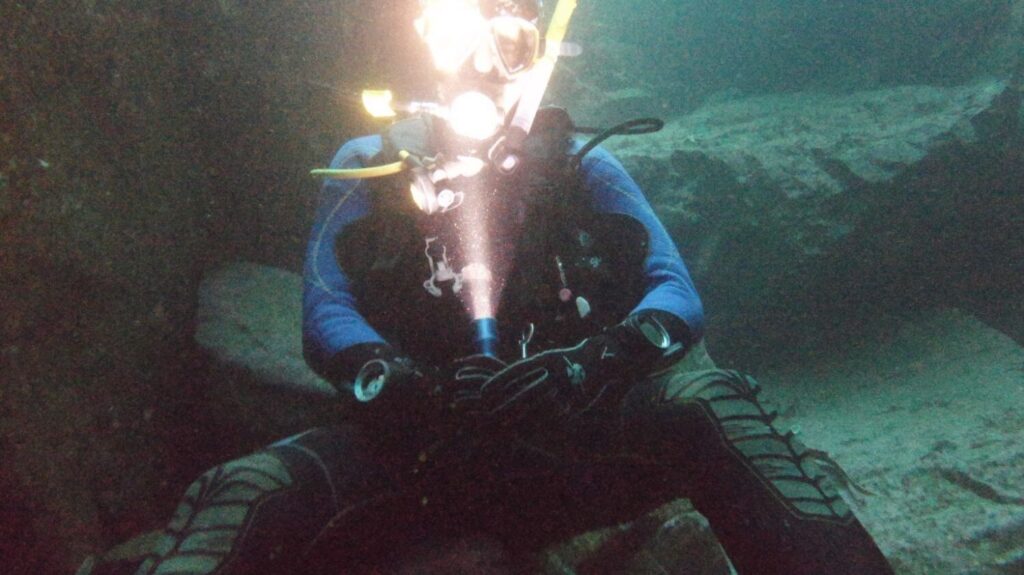
The next day we set out again; this time to experience a the “boat diving” day experience with Scuba Dive West.
Whereas the “Adventure Day Trip” we’d gone on the day before had travelled some 17km away from Scuba Dive West, “Boat Diving” days are closer to the dive centre; usually within 5km (but yes technically both types of event involve going on the boat!).
Our first dive site took just 12 minutes to reach and was called Thany Beg; a sloping underwater reef.
Thany Beg had the densest colonies of soft yellow coral known as Dead Man’s Fingers of any dive site we’d so far visited as well as a thick crown of kelp along its upper ridge.
More sea potatoes, sea anemones, crabs and starfish clambered amongst the reef looking for food whilst pollack and male cuckoo wrasse; fish with bring orange and blue bodies that looked positively tropical swam past.
At one point I spotted a 2 foot long lesser-spotted catshark prowling through the waters – perhaps on a hunt.
Growing up to 3 foot long, lesser-spotted catsharks (aka dogfish) are small ground sharks that are the most common type of shark encountered in shallow north-Atlantic waters.
Although I’d seen one before whilst scuba diving the Aran Islands it had been sleeping in the kelp; this was the first time I saw a catshark swim and it was cool to see how shark-like a manner they do this in, twisting their long supple bodies through the water with precision and purpose.
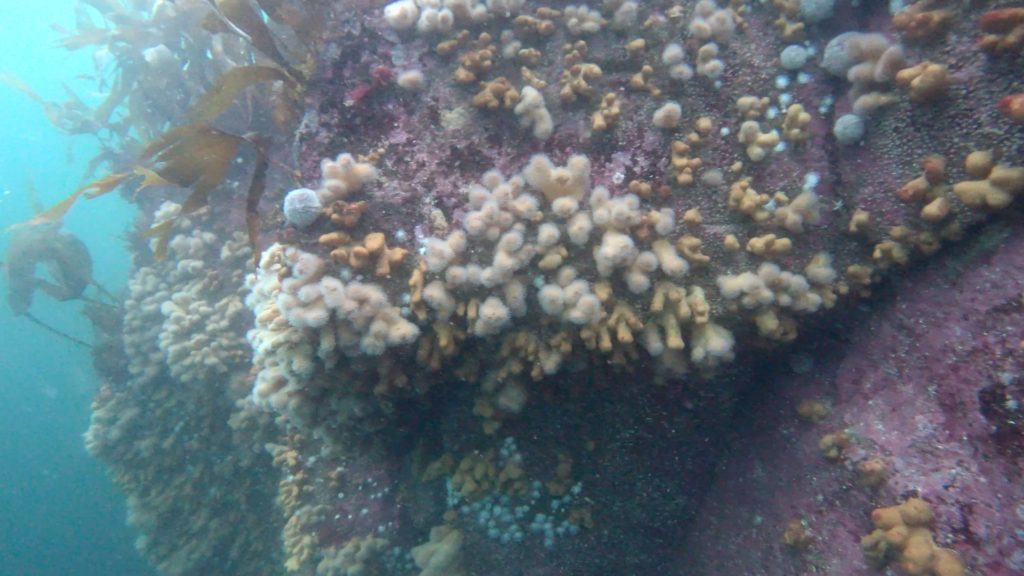
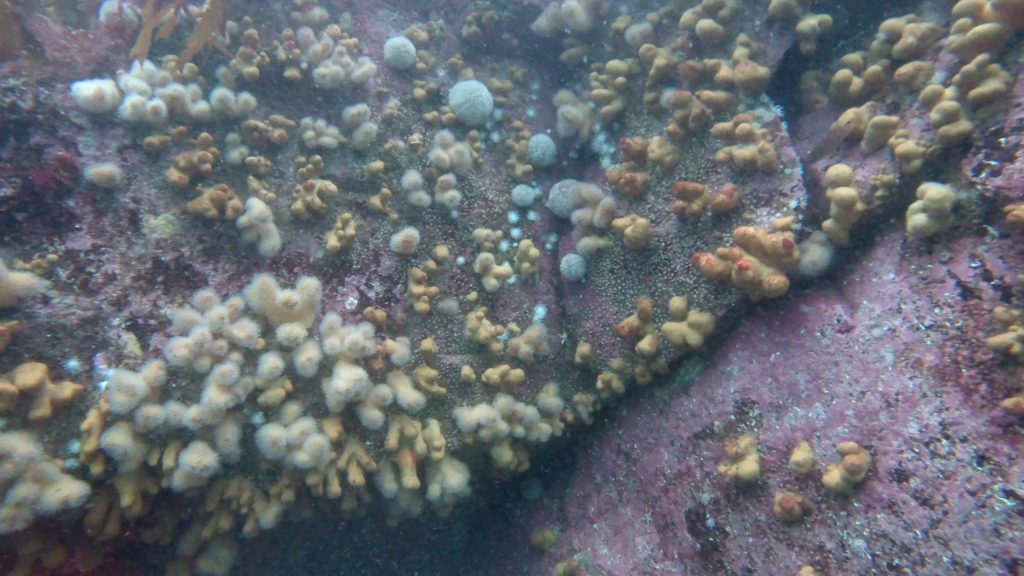
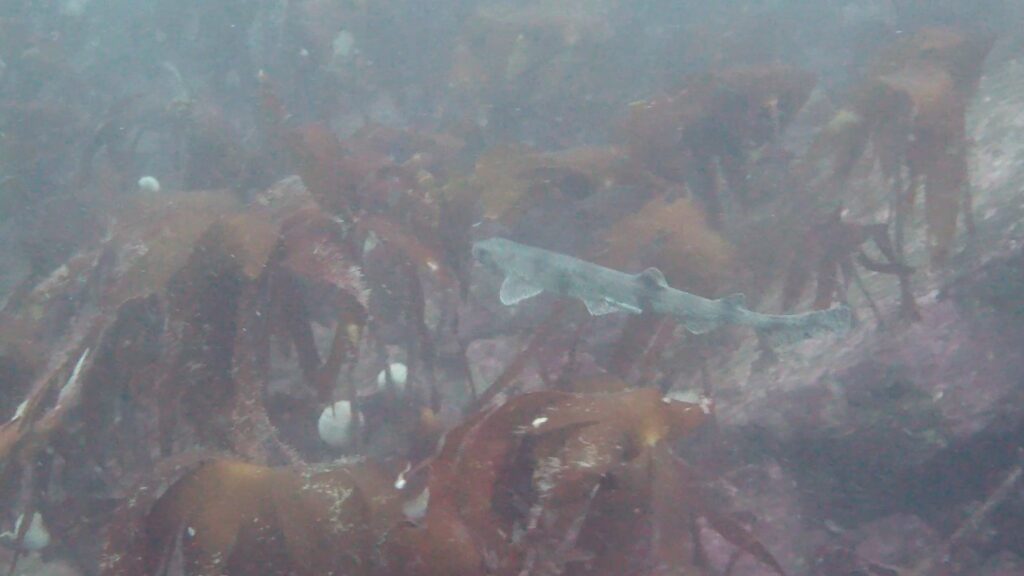
For the final dive we went to the nearby Julia T shipwreck; a 98 feet (30 meter) long and 10 ft (3 m) tall former supply vessel that lies 88 ft (27 m) deep after sinking whilst under tow on its way to be decommissioned and is now located in the middle of a vast silt bed.
For this final dive, I’d removed my Sealife Micro 3.0 from my camera rig and replaced it with my older Paralenz Vaquita camera – the Vaquita / Vaquita Gen 1 so that it was directly alongside my newer Vaquita Gen 2; which had just been released that month!
I wanted to compare the filming capabilities of these two most recent versions of Paralenz’s Vaquita camera. The Gen 2 is very similar to the Gen 1 except that it has slightly better underwater colour correction and a wider lens allowing you to capture more in the same shot:
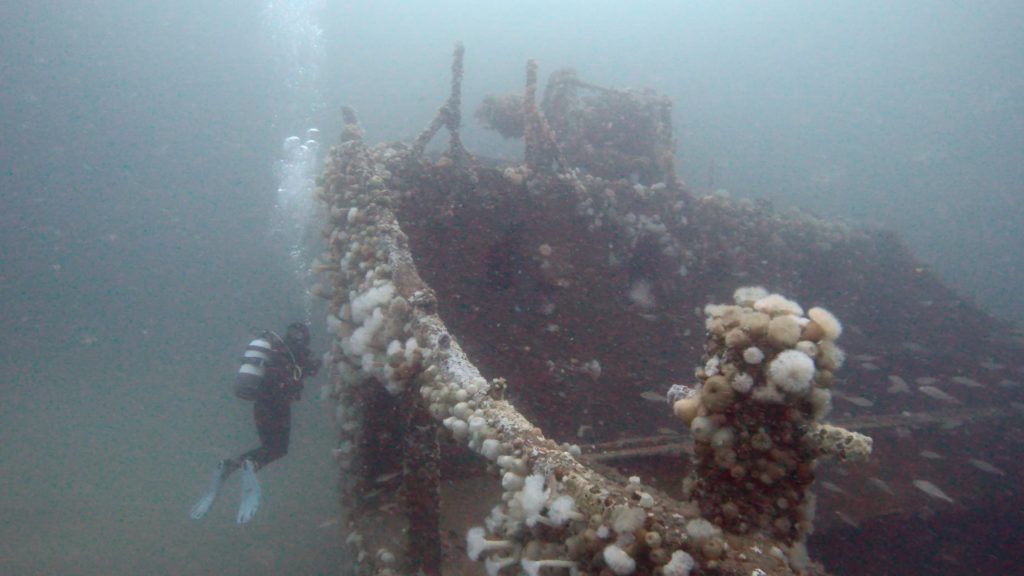
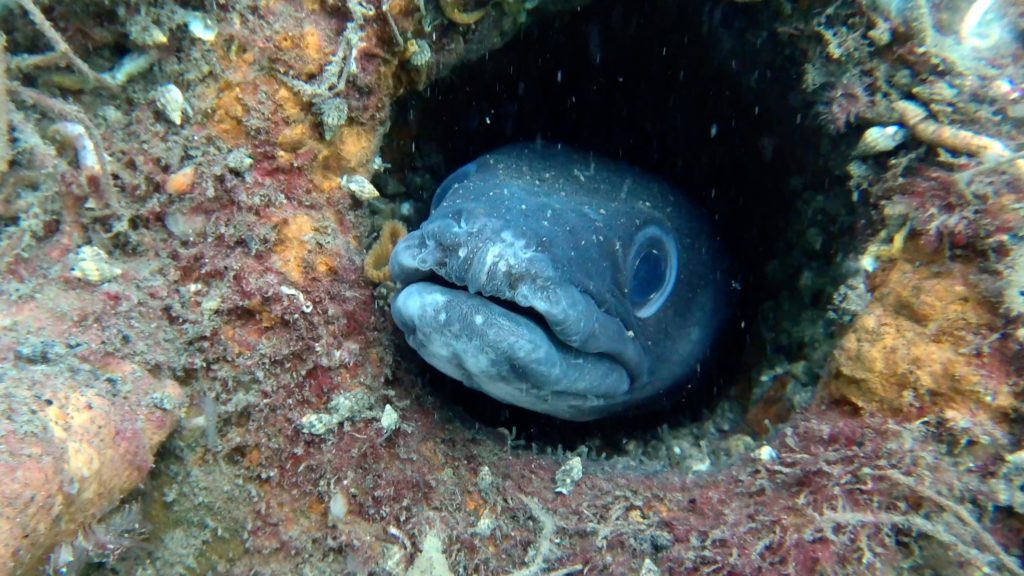
The Julia T was a truly beautiful wreck to behold and the first big cold water shipwreck that I’d ever explored.
It was almost entirely coated with bright orange and pale yellow plumose sea anemones as well as a few small patches of dead man’s fingers and sponges.
Enshrouding it like a mist was a massive school of bib- also known as pout or poor man’s cod.
A member of the cod family, bib are deep bodied fish with whiteish bodies that sport chin barbels and typically grow to around 20 – 30cm, feeding on water debris and small worms.
There were also a few pollock hanging around in addition to a huge baillon’s wrasse with brown and white markings that must have measured 50cm long.
Hiding within the wreck there was also a conger eel. Conger Eels are the heaviest eels in the world and can grow up to 7ft long although this one was only a couple of feet.
They typically hide in their holes by day (as this one was doing) emerging at night to hunt fish; I’m sure the bib provided a never ending source of food for the one at Julia T!
Killary Fjord Diving Squad DEBRIEFING:
The Julia T wreck was an epic conclusion to an amazing weekend of diving around Killary Fjord – I’d have happily stayed a few more days if Scuba Dive West had any more upcoming boat dives or adventure day trips as there are dozens more dive sites that they explore but they usually only do so at the weekend which was the case when I was there.
It had been fascinating continuing to discover Ireland’s cold water marine ecosystems following on from my introduction to them at the Aran Islands six weeks before and I was already hungry for more!
It was also extremely exciting to have the Paralenz Vaquita Gen 2; the wide lens of which can capture noticeably more than the Gen 1. Also, the flip mount macro lens means I can now rapidly switch between filming subjects from a distance and right up close allowing me to document the marine world from new and exciting (macro) angles!
